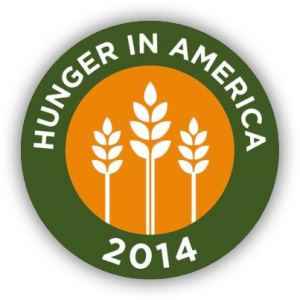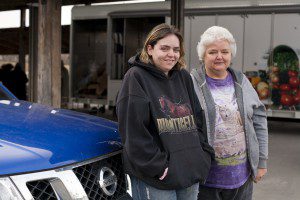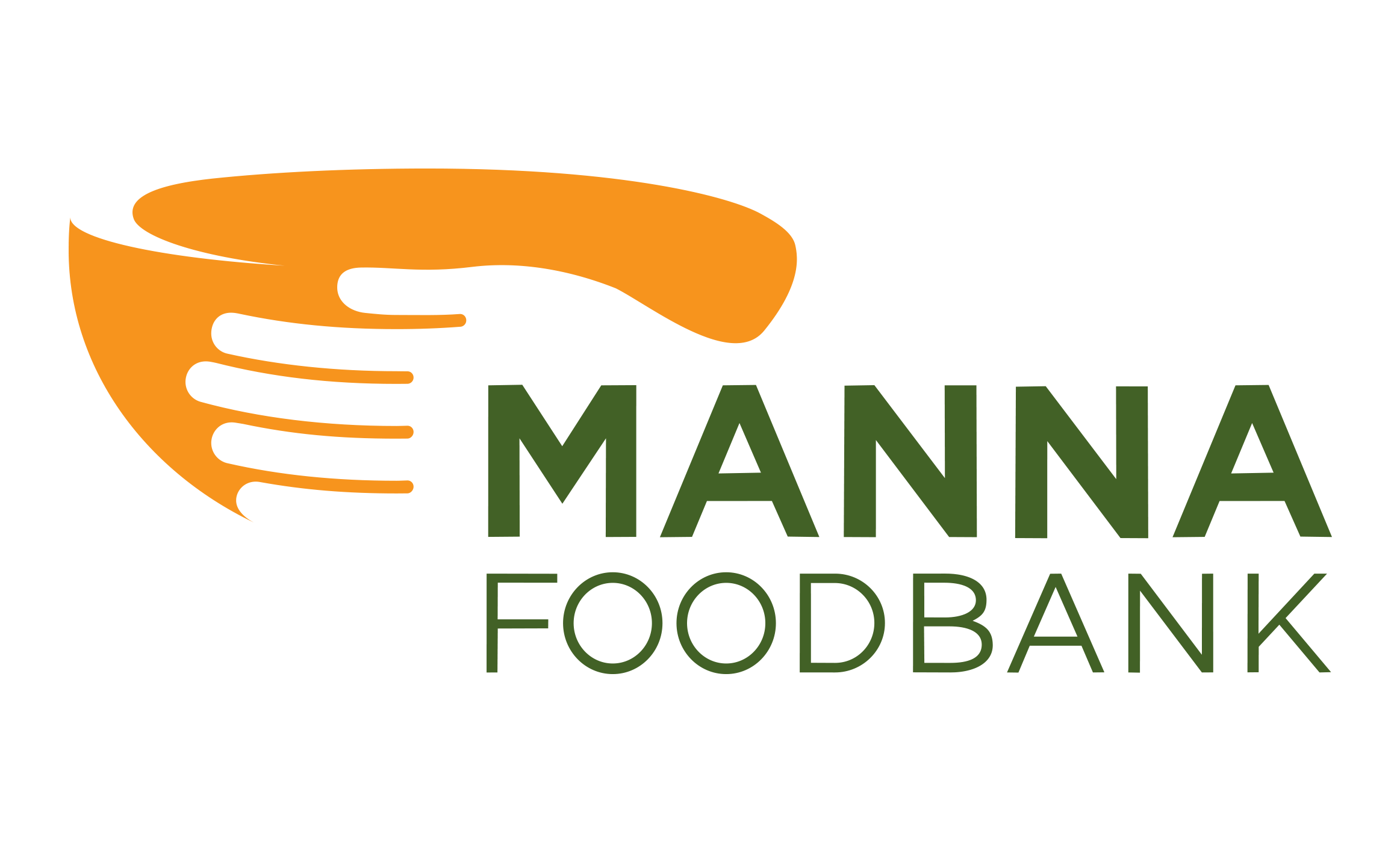Hunger in America 2014 Report
 Feeding America and its nationwide network of food banks have conducted the most comprehensive study of hunger in America every four years since 1993. Like the prior studies, Hunger in America 2014 (HIA 2014) documents the critical role that food banks and their partner agencies play in supporting struggling families in the United States. HIA 2014 details how the various agencies operate, including the sources of food available to them, the types of programs they run, their use of volunteers, and the challenges they face. It also documents the number and characteristics of clients that seek assistance from the charitable food assistance network, including what other sources of food assistance are available to them. Its results are based on nationally representative surveys of food banks’ partner agencies and their clients in 2013.
Feeding America and its nationwide network of food banks have conducted the most comprehensive study of hunger in America every four years since 1993. Like the prior studies, Hunger in America 2014 (HIA 2014) documents the critical role that food banks and their partner agencies play in supporting struggling families in the United States. HIA 2014 details how the various agencies operate, including the sources of food available to them, the types of programs they run, their use of volunteers, and the challenges they face. It also documents the number and characteristics of clients that seek assistance from the charitable food assistance network, including what other sources of food assistance are available to them. Its results are based on nationally representative surveys of food banks’ partner agencies and their clients in 2013.
A pdf of MANNA FoodBank’s summary booklet is available: MANNAFoodBankHIA2014Report.
This report presents results from HIA 2014 for MANNA FoodBank. For a discussion of the findings from the national study, see the hunger-in-america-2014-full-report.
Methods
HIA 2014 follows the pattern of past Hunger in America studies by implementing two surveys—an Agency Survey and a Client Survey—through the collaborative effort of an extended research team. The first step of the study design was conducting the Agency Survey, which included all partner agencies identified by MANNA FoodBank on the agency list it compiled and provided to Feeding America. The Agency Survey, conducted from October 2012 to January 2013, was used to enumerate eligible food programs and obtain basic information about those programs. Following the Agency Survey, a client sample was obtained using a multistage design. Food bank staff and volunteers carried out the Client Survey from April through August 2013.
The information in this report is based solely on the agencies and programs that participated in this study, adjusted by weighting to account for sampling and nonresponse. When findings cannot be presented due to small sample size (fewer than five unweighted observations), the symbol “++” is shown. The Agency Survey yielded responses from 204 eligible agencies (91 percent). Of the 684 eligible clients sampled, 451 (66 percent) responded to the Client Survey. Because children were not eligible respondents for the Client Survey, HIA 2014 focuses on the services provided to adult clients and their household members. Consequently, the study will generally underestimate the services provided to children by the Feeding America network.
Key Findings
Within the area served by MANNA FoodBank, the food bank and its partner agencies continue to serve many clients facing various challenges.
Key findings are as follows:
• Unduplicated Number of Clients Served: The unduplicated client count measures the number of unique individuals or households who access food from the charitable food assistance network. Within this food bank’s service area, 13,200 unique clients are served in a typical week and 107,600 are served annually. An estimated 4,800 unique households are served in a typical week and 38,300 are served annually.
• Client Demographics:
 Race/Ethnicity: Nationally, the most common racial and ethnic groups are white, black or African American, and Hispanic or Latino. Within this food bank’s service area, 71 percent of clients identify themselves as white, 10 percent as black or African American, and 16 percent as Hispanic or Latino. In the two counties with the largest population, client demographics are markedly different. In Buncombe County, 77 percent of clients identify themselves as white, 21 percent as black or African American, and 1.9 percent as Hispanic or Latino. In Henderson County, 65 percent of clients identify themselves as white, 8 percent as black, and 27 percent as Hispanic or Latino.
Race/Ethnicity: Nationally, the most common racial and ethnic groups are white, black or African American, and Hispanic or Latino. Within this food bank’s service area, 71 percent of clients identify themselves as white, 10 percent as black or African American, and 16 percent as Hispanic or Latino. In the two counties with the largest population, client demographics are markedly different. In Buncombe County, 77 percent of clients identify themselves as white, 21 percent as black or African American, and 1.9 percent as Hispanic or Latino. In Henderson County, 65 percent of clients identify themselves as white, 8 percent as black, and 27 percent as Hispanic or Latino.- Age: Among all clients, 24 percent are children under age 18, and 18 percent are seniors age 60 and older. Since children could not consent to be surveyed or sampled, (and therefore would not include programs such as MANNA Packs for Kids) the estimate for children served is considered to be an underrepresentation of the actual number of children served by MANNA.
• Income and Poverty: An estimated 60 percent of client households have an income of $10,000 or less; 22 percent have annual incomes of $10,001 to $20,000. Taking into consideration household size, 73 percent of client households have incomes that fall at or below the federal poverty level.[1]
• Health: An estimated 31 percent of households report at least one member with diabetes; 55 percent of households report at least one member with high blood pressure. Additionally, 62 percent of households reported having unpaid medical bills.
• Education: An estimated 67 percent of all clients have attained a high school degree or General Equivalency Diploma (GED) or more, and an estimated 26 percent of all clients have post-high school education (including license or certification, some college, or a four-year degree).
• Coping Strategies: When faced with the threat of food insecurity, individuals are forced to engage in various coping strategies. Clients reported the following:
- 88% purchased inexpensive, unhealthy foods
- 66% ate food past the expiration date
- 62% purchased food in dented or damaged packages
- 48% received help from family or friends
- 46% sold or pawned personal property
- 41% watered down food or drinks.
• Employment: An estimated 56 percent of households have a household member who had worked for pay in the last 12 months; in 64 percent of client households, the most-employed person from the past 12 months is currently out of work.
Among client households where the most-employed person is not working and not actively seeking work, 21 percent are retired, 59 percent are disabled, in poor health, or act as a caretaker for another, while 21 percent indicate some other reason for not seeking work.
• Spending Trade-offs: Client households made trade-offs between paying for food and paying for other necessities. Clients reported the following:
- 75% chose between paying for food and paying utilities at least once in the past 12 months; 28% face this choice every month.
- 74% chose between paying for food and paying for transportation or gas for a car at least once in the past 12 months; 21% face this choice every month.
- 57% chose between paying for food and paying their rent or mortgage at least once in the past 12 months; 21% face this choice every month.
- 64% chose between paying for food and paying for medicine or medical care at least once in the past 12 months. 24% face this choice every month.
• Housing: An estimated 96 percent of households reside in non-temporary housing, such as a house or apartment, and 4 percent of households reside in temporary housing, such as a shelter or mission, a motel or hotel, or on the street. 57 percent of households chose between paying for food and paying their rent or mortgage at least once in the past 12 months. An estimated 9 percent of respondents have experienced a foreclosure or eviction in the past five years.
• SNAP Participation: The Supplemental Nutrition Assistance Program (SNAP, formerly known as the Food Stamp Program and known in different states under alternative names) is the largest nutrition assistance program. Participating low-income households receive monthly SNAP benefit allotments in the form of electronic debit cards (also known as EBT, or electronic benefit transfer). An estimated 56 percent of client households currently receive SNAP benefits.
Summary
 The Hunger in America 2014 study tells the story of programs determined to help clients and their households meet their food needs, and of a population that critically needs this assistance. Across the nation, the weak economy with its historically low employment rate and high poverty rate has challenged this system.
The Hunger in America 2014 study tells the story of programs determined to help clients and their households meet their food needs, and of a population that critically needs this assistance. Across the nation, the weak economy with its historically low employment rate and high poverty rate has challenged this system.
The clients seeking assistance have varying levels of education, training, and language skills. Many have health conditions that prevent work, and many of those working have found only part-time or part-year jobs. Among food assistance clients, the rates of household poverty and food insecurity are typically very high.
While recent declines in the national unemployment rate suggest that demand for food assistance may slow down, it is still too soon to know. In certain areas of the country, unemployment rates are down in part because many who have been looking for work for a long time have simply dropped out of the labor market. Many workers at the bottom of the labor market have not seen a real increase in wages for many years.
MANNA FoodBank, as a part of the Feeding America network, is important to local populations in need. It works with partner agencies to serve clients with unique needs and circumstances, thus playing a critical role in addressing hunger in America.
The study was funded by The Howard G. Buffett Foundation. Locally the study was funded by The Community Foundation of Western North Carolina. See a full copy of the Western North Carolina report Hunger in America 2014.
[1] Poverty guidelines vary by household size. In 2013, a single person falls under 100 percent of the poverty level with annual cash income of $11,400 or less, two people live in poverty with income of $15,510 and below, and families with three people live in poverty if income is $19,530 or below. For all guidelines, see US Health and Human Services Department “Annual Update of the HHS Poverty Guidelines,” Federal Register, January 24, 2013.
